.jpg)
The story of the Taj Mahal is really awe-inspiring and truly shows the power of love. This story starts in 1607 when a 14-year-old boy, Prince A’la Azad Abul Muzaffar Shahab ud-Din Mohammad Khurram, is strolling through a marketplace and sets eyes on a 15-year-old girl, Arjumand Banu Begum. They were married 5 years later in 1612. Prince Khurram was given the name Shah Jahan, by his father after he secured the southern border of the Moghul empire. Shah Jahan means “Lord of the World” and was a fitting title considering the size and scope of their empire. After Shah Jahan and Arjumand Begum were married, he deemed her Mumtaz Mahal which means “Jewel of the Palace”.
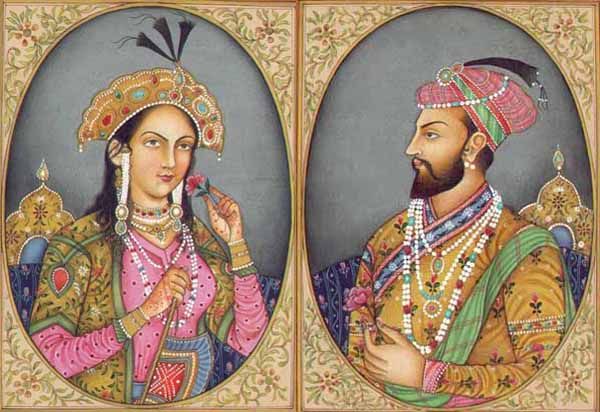
Mumtaz Mahal was the 2nd wife of Shah Jahan, who had a total of three wives. Mumtaz Mahal was his childhood love and his favorite. She traveled all over the empire with Shah Jahan. She served as his advisor and bore him 14 children. Unfortunately, Mumtaz Mahal died during the childbirth of their 14 child. Shah Jahan was said to have gone into a deep state of depression. He stopped eating and hardly slept. He finally found a release of sorts in his dearly departed’s last wish. She wanted her husband to build a tomb in her memory such as the world had never seen before, and build it he did.
The development of this amazing sight started in 1632. The Taj Mahal was constructed using materials from all over India and Asia and over 1,000 elephants were used to transport building materials. The total cost has been estimated to be about 45 million Rupees (about 750K USD) at that time. A labor force of around 20,000 workers were recruited from all across India. Sculptors from Bukhara, calligraphers from Syria and Persia, inlayers from southern India, stonecutters from Baluchistan, a specialist in building turrets, another who carved only marble flowers were part of the thirty-seven men who formed the creative unit. Everything was done by hand.
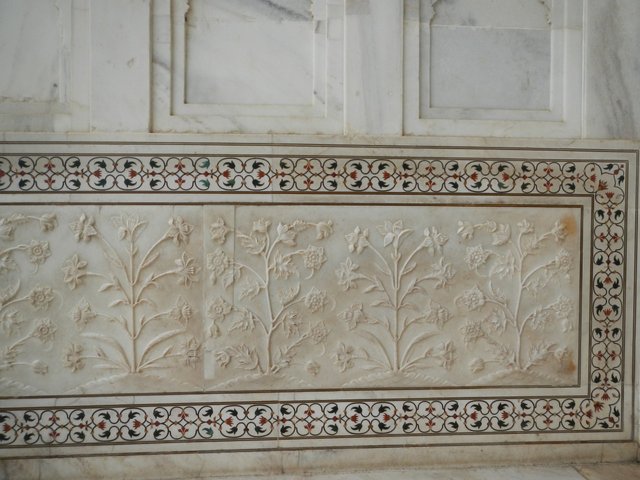
When you consider all of these flowers were handcrafted and glued into place, then you count the number of flowers all over the Taj Mahal, you can only imagine the love and care that went into this work. You can still find decendants of these families in Agra today, still completing this craft following the age old traditions.
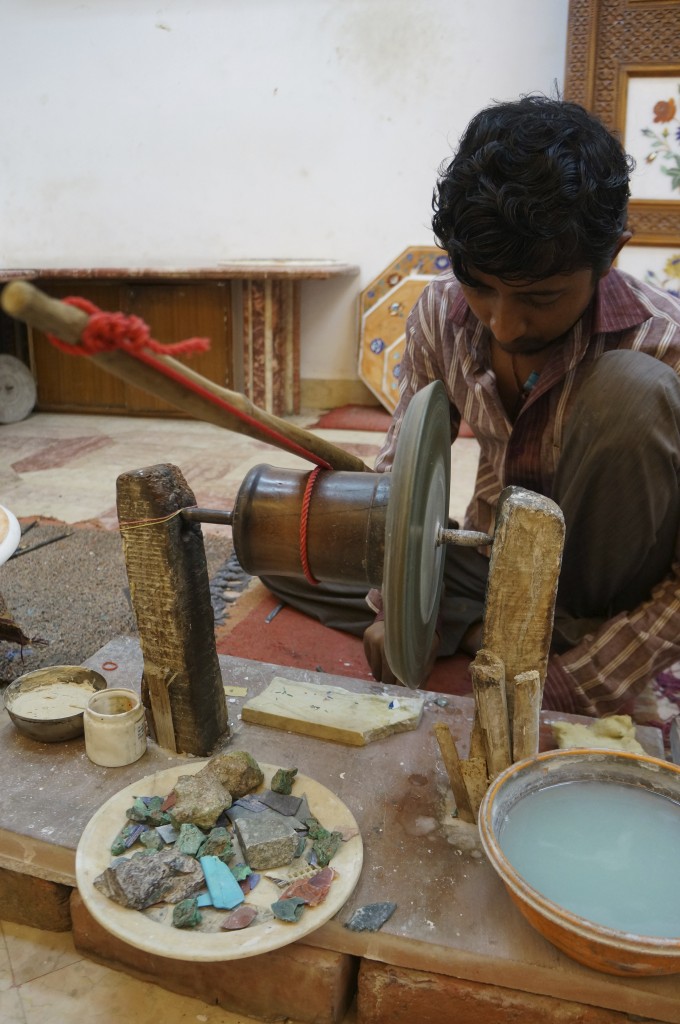
The marble inlay is first carved with just fingers and a tiny chisel.
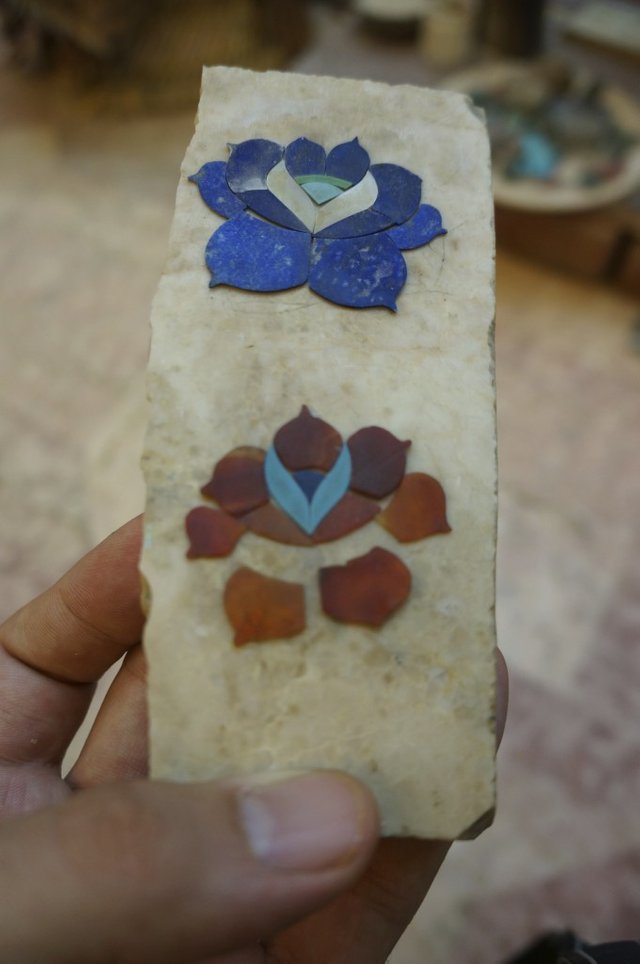
Then the semi-precious stones are ground down into the shapes needed to fill the spaces and make the design.
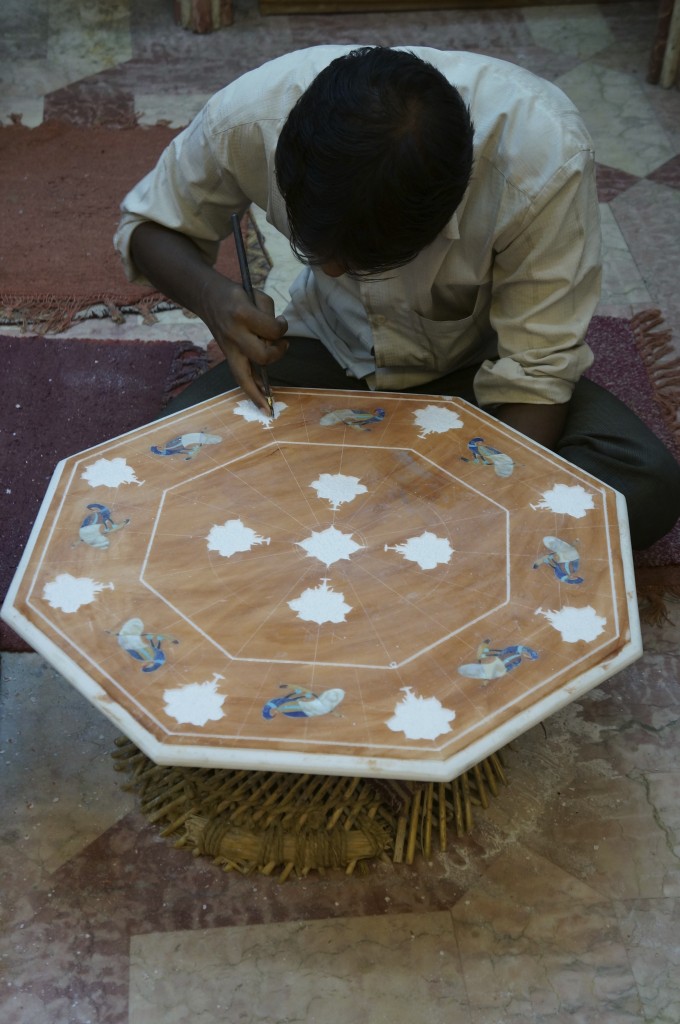
Stones in perfect form and ready to be placed.
This “palace” contained so much labor and so much love. There was so much money and material put into the Taj Mahal. Can you even imagine what 45 million rupees converts to in today’s world? The structure was made completely of sandstone then covered in marble and inlaid with precious jasper and jade. The finials were made of solid gold (British Imperialists later replaced these with brass). Shah Jahan did all this to honor his wife’s dying wish. He did this to find some solace from the grief of losing his love.
When the Taj was completed, Mumtaz Mahal was entombed here, just as she wished. Shortly after, Shah Jahan was imprisoned by his son Aurangzeb for squandering the families wealth to build the Taj Majal and weakening their empire. He was imprisoned in the Agra Fort, across the Yamuna River, for 18 years with only one wish being granted, he was to have a view of the Taj fit for a king.
It had been Shah Jahan’s intention to build his own tomb in black marble on the opposite bank of the River Jamuna, linking it with a bridge to symbolize a love that transcended death. But in 1657, before work could begin the emperor fell ill and was deposed a year later by his power-hungry son, Aurangzeb. History is unclear as to precisely where Shah Jahan was imprisoned. The most frequently cited legend claims that for the remainder of his life the emperor was held in the Red Fort at Agra. Following his death in 1666, he was buried in his masterpiece alongside the adored queen who had been its inspiration.
When the “king of the world” died in his prison, he had one last request. Shah Jahan wanted to spend eternity with the woman he loved. He wanted to be buried at the Taj Mahal with Mumtaz. His family honored his dying wish and Shah Jahan and Mumtaz Mahal now lay side by side at the Taj Mahal, the most iconic tribute to love.
" Should guilty seek asylum here,
Like one pardoned, he becomes free from sin.
Should a sinner make his way to this mansion,
All his past sins are to be washed away.
The sight of this mansion creates sorrowing sighs;
And the sun and the moon shed tears from their eyes.
In this world this edifice has been made;
To display thereby the creator’s glory.”‘ ~Shah Jahan
Thats pretty cool man i know @firepower would apreciate this post and
Downvoting a post can decrease pending rewards and make it less visible. Common reasons:
Submit
I am happy to read about this historical place. i need to visit it one day in future. By the way, i upvote and followed you as well !! let'e be friends.
Downvoting a post can decrease pending rewards and make it less visible. Common reasons:
Submit